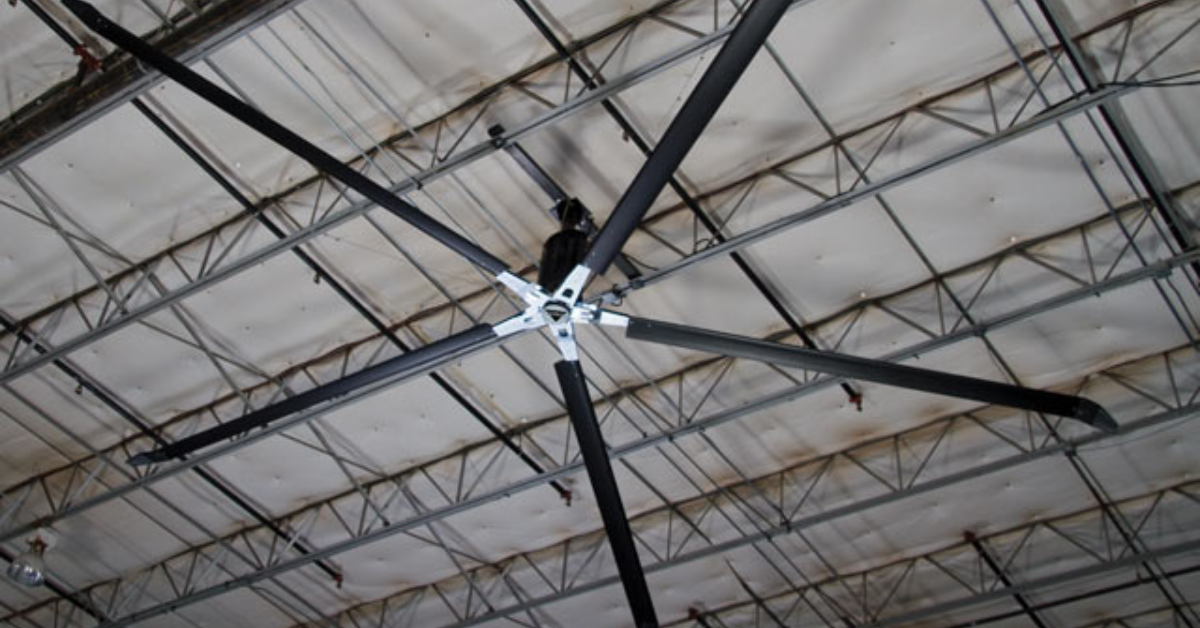Enhancing Airflow Efficiency with High Volume Low Speed Fan Solutions
In today’s evolving industrial and commercial environments, maintaining proper ventilation and air circulation is critical for comfort, health, and operational efficiency. Among the many innovations designed to improve air quality and energy efficiency, the High Volume Low Speed Fan stands out as a revolutionary solution. Known for its ability to move a large volume of air at a slow speed, this type of fan delivers effective and uniform airflow across vast spaces, making it a preferred choice in warehouses, factories, gyms, airports, and large retail facilities.
Understanding the Concept of High Volume Low Speed Fans
A High Volume Low Speed Fan, commonly referred to as an HVLS fan, is a ceiling-mounted fan designed with extra-large blades—typically ranging from 7 to 24 feet in diameter. These fans rotate slowly yet move massive amounts of air due to the blade size and aerodynamic design. Unlike conventional high-speed fans that create turbulent airflows, HVLS fans provide a smooth, gentle breeze that enhances comfort without creating noise or drafts.
By generating a consistent air circulation pattern, HVLS fans balance indoor temperatures and minimize heat stratification. This ensures that both the floor and ceiling levels maintain similar temperatures, reducing the need for overuse of air conditioning or heating systems.
Key Benefits of Using High Volume Low Speed Fans
Energy Efficiency
One of the standout advantages of a High Volume Low Speed Fan is its remarkable energy-saving capability. Compared to traditional small ceiling or wall-mounted fans, HVLS fans consume significantly less power. They reduce the workload on HVAC systems by evenly distributing conditioned air throughout the facility, leading to substantial reductions in energy bills.Enhanced Comfort and Air Quality
HVLS fans promote consistent air movement that helps maintain a balanced indoor temperature. This steady airflow eliminates stagnant air pockets, improves overall comfort, and reduces humidity levels. For industrial workers or gym users, this means fewer instances of heat stress and fatigue, creating a more pleasant and productive environment.Cost Savings and Sustainability
Businesses seeking sustainable and cost-effective operations benefit greatly from investing in High Volume Low Speed Fan systems. By optimizing airflow and reducing energy consumption, these fans align perfectly with green building standards. Additionally, their long lifespan and minimal maintenance needs further enhance return on investment.Quiet and Efficient Operation
Despite their massive size, HVLS fans operate quietly due to their low-speed design and precision engineering. This makes them suitable not just for industrial facilities but also for public spaces such as malls, sports complexes, and airports where low noise levels are essential.Year-Round Functionality
High Volume Low Speed Fans are not just beneficial during the summer months. In colder seasons, they can be run in reverse to push warm air trapped near the ceiling down to occupant level, thus maintaining thermal comfort and lowering heating costs.
Applications of High Volume Low Speed Fans
The versatility of HVLS fans allows them to be used across various environments:
Industrial Warehouses and Manufacturing Plants: To reduce heat buildup, improve ventilation, and enhance worker comfort.
Commercial Buildings: Ideal for large retail spaces, showrooms, and malls where even air distribution is key to customer comfort.
Agricultural Facilities: To control humidity levels and provide better ventilation for livestock and crops.
Educational and Recreational Centers: Perfect for gyms, schools, and auditoriums that require silent yet efficient air movement.
Airports and Terminals: Helps improve air quality while maintaining energy efficiency in expansive spaces.
Factors to Consider When Choosing a High Volume Low Speed Fan
When selecting an HVLS fan, several factors influence its effectiveness and suitability:
Size and Ceiling Height: Larger fans are better suited for expansive areas with higher ceilings, while smaller models can efficiently cover moderately sized rooms.
Blade Design and Material: Aerodynamic blades made from lightweight and durable materials like aluminum ensure optimal performance and longevity.
Motor Type: Brushless direct current (BLDC) motors are known for their high efficiency, quiet operation, and low maintenance requirements.
Installation and Safety Features: Proper installation ensures stability and safety. Modern HVLS fans often include safety cables, secure mounting systems, and advanced control options.
Control and Automation: Many High Volume Low Speed Fans come with smart controls, allowing users to adjust speed, direction, and timing remotely through digital panels or mobile apps.
The Role of HVLS Fans in Green Building Design
As sustainability becomes a central focus in modern architecture, High Volume Low Speed Fans play a key role in energy-efficient building designs. By reducing reliance on air conditioning systems, they contribute to lower carbon footprints and enhance indoor environmental quality. Their energy-efficient performance aligns with green certification programs such as LEED (Leadership in Energy and Environmental Design), making them a preferred choice for eco-conscious projects.
Maintenance and Longevity
HVLS fans are designed for durability and long-term performance. With proper installation and routine checks, these fans can operate efficiently for years without significant maintenance. Regular cleaning of blades and inspection of motor systems ensures that the fan continues to deliver consistent performance. Additionally, most reputable manufacturers provide extended warranties, reflecting confidence in the product’s longevity and reliability.
Why Businesses Should Invest in HVLS Technology
Investing in a High Volume Low Speed Fan is a strategic decision for any business aiming to balance comfort, cost efficiency, and sustainability. Beyond the immediate improvement in air quality and comfort, the long-term operational savings make it a wise financial choice. Facilities that adopt HVLS fans often report significant energy savings, improved worker productivity, and enhanced customer satisfaction.
Moreover, as industries increasingly focus on health, safety, and environmental standards, integrating HVLS fans demonstrates a commitment to modern, eco-friendly, and responsible facility management.
Conclusion
In conclusion, the High Volume Low Speed Fan represents a perfect combination of innovation, functionality, and sustainability. Its ability to improve air circulation, reduce energy costs, and enhance comfort makes it a valuable addition to any industrial or commercial space. Whether you are upgrading your existing ventilation system or planning a new facility, investing in this technology is a smart move towards a more efficient and eco-friendly future.







